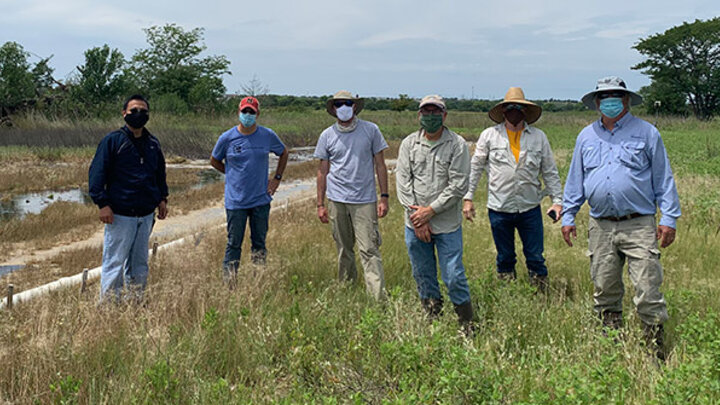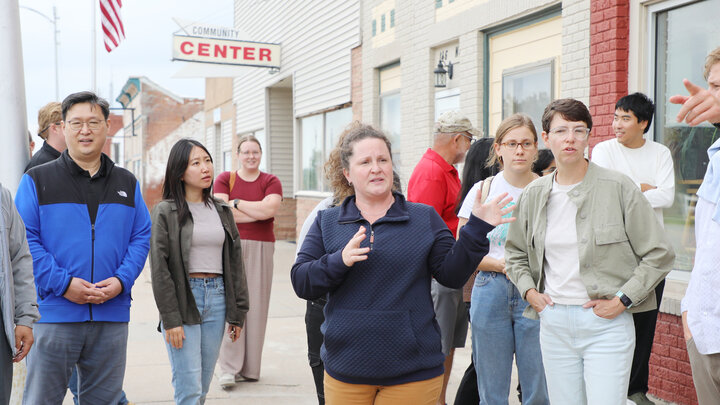One can search the entire earth and nowhere else in the world will one find a small, tiny insect called the Salt Creek tiger beetle but here in eastern Nebraska, more specifically in the few remnant saline marshes near Lincoln. However, a regional collaboration, involving University of Nebraska-Lincoln researchers, is working to not only prevent the extinction of this rare beetle, but also its habitat and other species with the installation of an environmental monitoring system.
The Salt Creek tiger beetle, considered to be an extremely rare and endangered insect, numbering a few hundred, has adapted to the highly specific habitat conditions of the Nebraska saline wetlands. However, its habitat is shrinking. In fact, according the Nebraska Game and Parks Commission, since the state’s settlement, more than 90 percent of the Nebraska’s saline wetlands have been destroyed or highly degraded through drainage or filling for agricultural, commercial and residential development.
Researchers from UNL's Community and Regional Planning (CRP) Program and local government officials and agencies have installed wireless-based, real-time sensor networks to monitor and evaluate salinity status, hydrological interaction and the vegetation community of these saline wetlands in Lancaster County.
Project collaborators who are using and helped install the wireless sensor system in April include the Nebraska Saline Wetland Conservation Partnership (SWCP), the City of Lincoln, Lancaster County, the Lower Platte South Natural Resource District (LPSNRD) and the Nebraska Game and Parks Commission (NGPC). The research project was funded by the U.S. Environmental Protection Agency and the Daugherty Water for Food Global Institute at the University of Nebraska.
Monitoring salinity is an essential component for ascertaining the wetland system’s environmental health and a distinguishing feature of the ecosystem. The saline wetlands have distinct features including highly saline soils, salt flats and salt-tolerant plant species. These saline wetlands serve as a federally identified critical habitat for the aforementioned Salt Creek tiger beetle as well as other endangered species such as the Saltwort plant- listed by Nebraska as an endangered species and home to over 260 different bird species.
Unfortunately, these saline wetlands are highly vulnerable ecosystems because of their dependence on saline ground water discharge at the surface. Because of the bionetwork’s high sensitivity, environmental monitoring is important for effective conservation efforts.
“This collaborative research project will fill critical data gaps for multiple agencies and hopefully raise awareness of the wetland’s value,” said Zhenghong Tang, professor and director of the CRP program. “Our advanced wireless-based monitoring system will increase the capacity of wetland managers to observe and assess wetland conditions.” These efforts couldn’t come at a more opportune or better time say collaborators.
“Nebraska’s eastern saline wetlands are the most limited and endangered wetland type and are considered critically imperiled in Nebraska,” said Thomas D Malmstrom, natural resources coordinator and park planner with the City of Lincoln Parks and Recreation Department. “These wetlands provide habitat for a variety of native plants and animal species that depend on a saline environment. The saline wetland management areas are located in close proximity to an urban area which presents conservation concerns but also opportunities for residents to explore a unique habitat, develop an appreciation of natural resources and enhance educational experiences for people of all ages.”
“I hope this project can help protect the globally unique saline wetlands and achieve our clean water mission through joint partnership efforts,” said Tang. “The work we do here is extremely important. We lose an estimated 24 to 150 species per day, caused by humanity’s impact on nature. When it is within our power as researchers, planners and conservation specialist, why wouldn’t we do everything possible to prevent more loss.”




